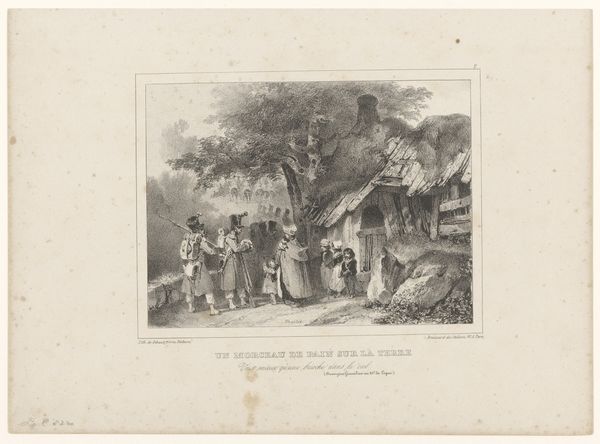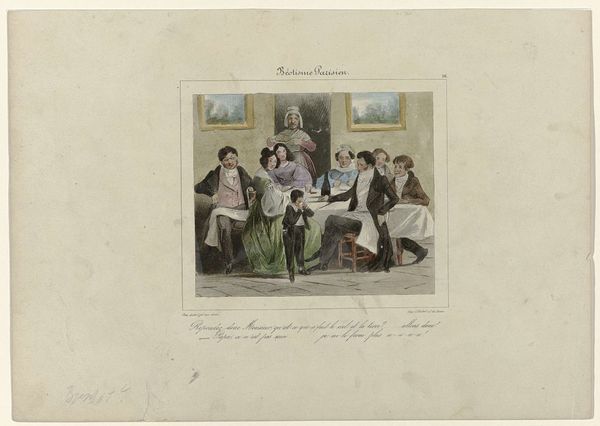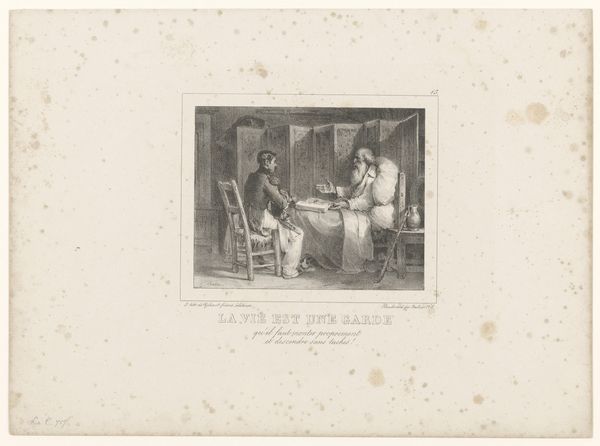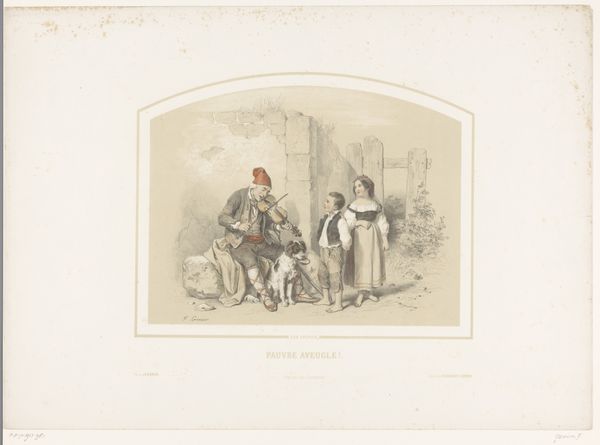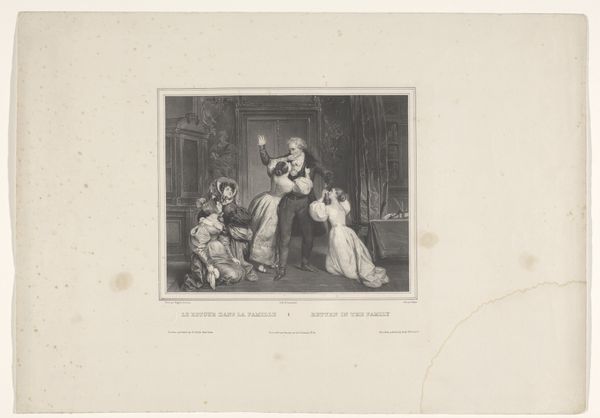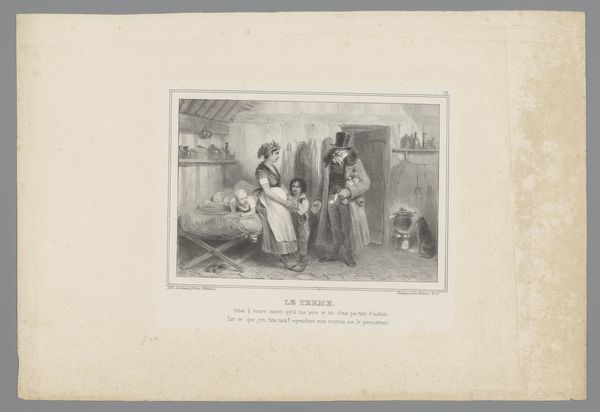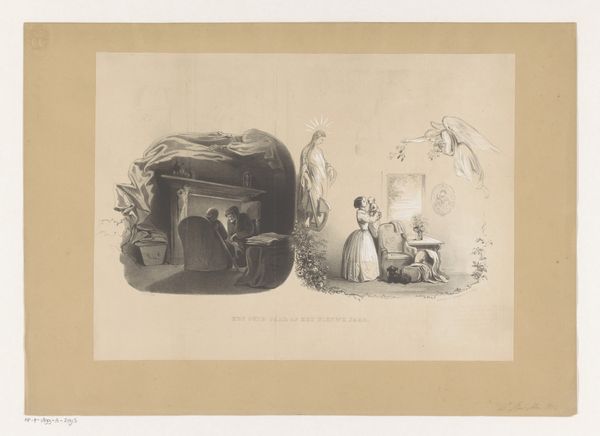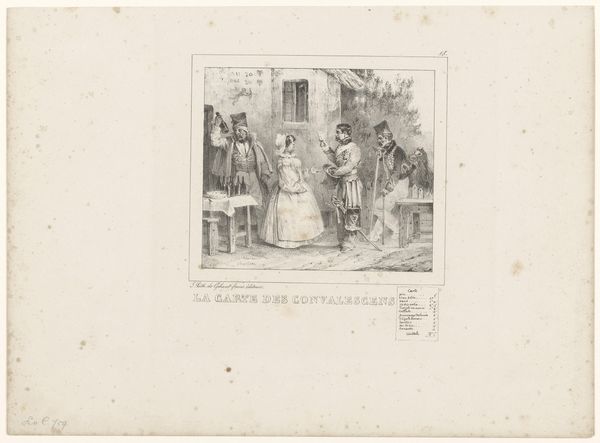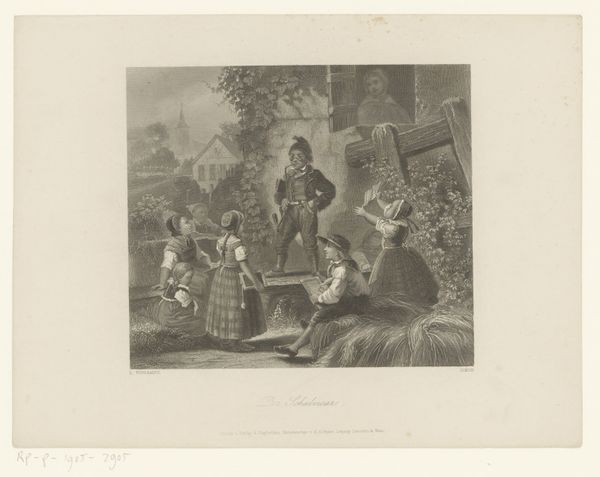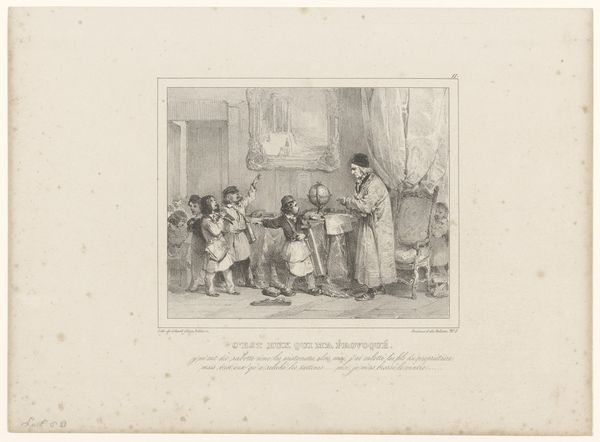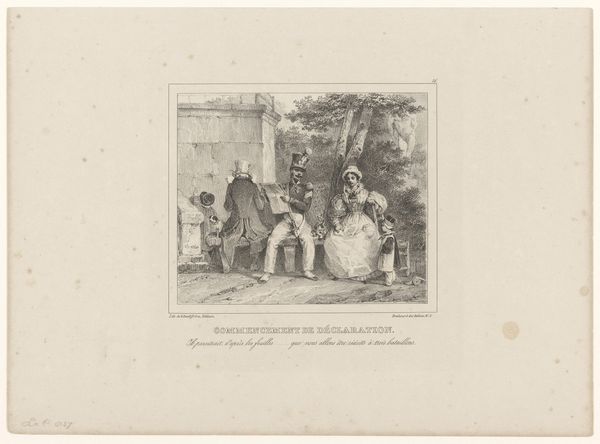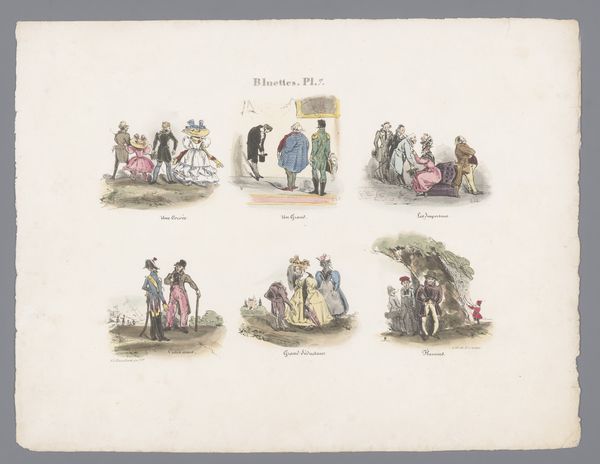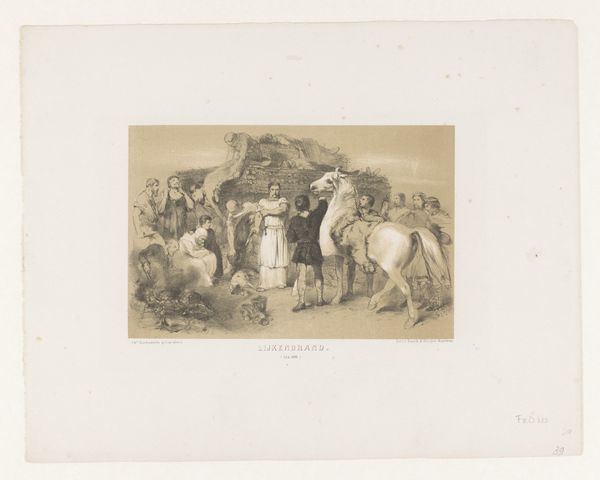
print, engraving
# print
#
landscape
#
romanticism
#
genre-painting
#
engraving
#
realism
Dimensions: height 404 mm, width 553 mm
Copyright: Rijks Museum: Open Domain
Curator: Ah, this print by François Grenier, titled "Vrouw gaat met manden gevogelte naar de markt" – "Woman Going to Market with Baskets of Poultry," roughly from 1819 to 1845, depicts a bustling, intimate rural scene. Editor: It’s lovely. The first thing that strikes me is the stillness contrasted with implied movement, everything feels somehow...contained, suspended, like a faded memory or the pause before action. Curator: Contained is a great word. You know, looking closely, it is an engraving – a really skillful one. Think of the labor that went into etching those fine lines onto a metal plate to achieve such delicate gradations of light and shadow. Each line carefully placed for mass reproduction! Editor: Exactly! You’ve got the tangible effort right there in the very fabric of the artwork. And the material—that paper stock they used for prints at that time; slightly rough, meant to be handled. It hints at circulation, mass culture, even commerce itself. A little paradoxical for such an intimate scene. Curator: But also so utterly Romantic, isn't it? The pastoral scene, idealized peasant life… Grenier presents such an affectionate, soft image. The weight of those baskets of fowl feels almost...light. Editor: I suppose. For me, the dogs really complete it. Like the entire village, the domestic and the working, are intertwined. Look at the details like the texture of the stone wall – it tells me about the skill required for this kind of print work, and that engraving process connects it to something more tangible and perhaps… truthful about labour. Curator: Right. A celebration of ordinary moments transformed through artistry into something eternal and beautiful. And ultimately for sale! Even so, to look at it, a bit wistful; maybe Grenier felt this tension himself, caught between a world being documented for the masses, yet always, already slipping away? Editor: Beautifully put. The engraving exists precisely to allow the original scene to be possessed and consumed, in print, by a bourgeois audience that romanticises rustic, manual labour, all removed from the literal marketplace the subject of the artwork is herself headed towards. It's more complicated than just wistful, wouldn’t you say? Curator: Always! Thank you; yes, exactly. It’s that dance between the ephemeral and the enduring, the hand-crafted and the mass-produced that keeps us coming back, doesn't it? Editor: Indeed. Makes you think differently about prints of genre scenes.
Comments
No comments
Be the first to comment and join the conversation on the ultimate creative platform.
